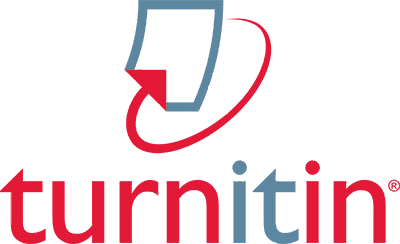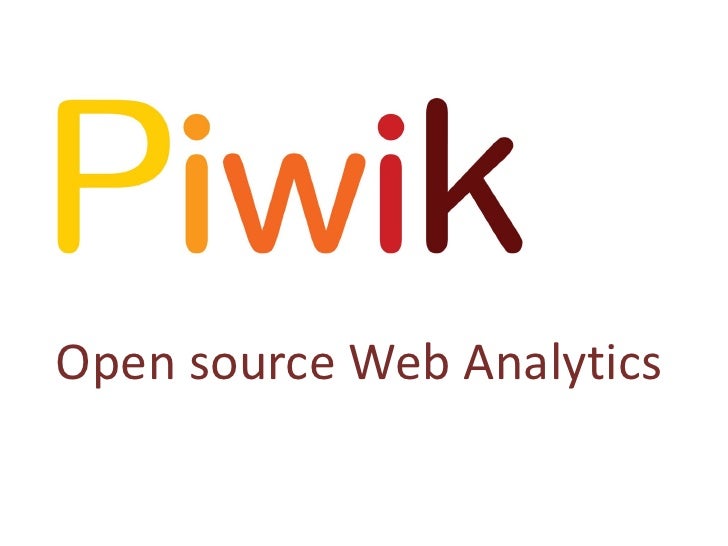AUTHOR GUIDELINES
ABOUT THE JOURNAL
Matrik: Jurnal Manajemen, Strategi Bisnis, dan Kewirausahaan is a scientific journal published by Udayana University. The journal aims to publish empirical and theoretical research articles in the field of business and management, covering areas such as marketing, finance, human resources, operations management, strategic management, tourism management, and entrepreneurship. The journal accepts original articles written in English that have not been previously published in other journals. All submitted manuscripts undergo a rigorous review process, including a double-blind peer review, to ensure the quality and credibility of the published work.
Matrik: Jurnal Manajemen, Strategi Bisnis, dan Kewirausahaan accepts articles based on research findings and conceptual studies in the fields of marketing, finance, human resources management, and entrepreneurship management. Topics of interest include, but are not limited to:
- Human Resources Management,
- Financial Management,
- Marketing Management,
- Strategic Management,
- Organizational Behavior,
- Operations Management,
- Islamic Business Studies,
- Entrepreneurship,
- E-business,
- Corporate Governance,
- International Business
Articles are selected based on originality, theoretical contribution, methodological rigour, and relevance to the development of knowledge in the field.
Target Audience
MATRIK: Jurnal Manajemen, Strategi Bisnis, dan Kewirausahaan is intended for academics, researchers, postgraduate students, and business professionals interested in the latest developments and research in business and management.
Submission and Article Processing Charge (APC)
Authors must submit manuscripts via our online submission system at OJS [https://ojs.unud.ac.id/index.php/jmbk/submission/wizard] . Submissions must conform to the journal’s formatting and referencing guidelines. Upon submission, a confirmation email will be sent.
Submission Fee: IDR 0
Article Processing Charge (APC): IDR 2,500,000 (applied upon acceptance, effective February 2025).
Peer Review Policy
All submitted manuscripts are subject to an initial editorial screening to evaluate their alignment with the journal’s scope and scholarly standards. Submissions that meet these criteria will be sent to a rigorous double-blind peer review process. Manuscripts that fall outside the journal’s focus or do not meet the required quality standard will be declined at the editorial screening stage, without external review. Editorial decisions—including acceptance, revision, or rejection—are made based on the reviewers’ evaluations and recommendations. The final decision on all manuscripts rests with the Editor-in-Chief of MATRIK: Jurnal Manajemen, Strategi Bisnis, dan Kewirausahaan.
Review Flow:
- Submission - The author submits the manuscript through the online submission system.
- Editorial Screening - The editorial team reviews the manuscript for scope alignment, originality, and minimum quality standards. Submissions that do not meet the criteria may be declined or returned at this stage.
- Double-Blind Peer Review - Eligible manuscripts are evaluated by independent reviewers under a double-blind process to ensure objectivity and scholarly rigor.
- Editorial Decision - Based on reviewer feedback, the editor makes a decision: accept, request revisions, or reject.
- Author Notification - Authors are informed of the editorial decision along with reviewer comments and any required revisions.
GENERAL PROVISIONS
Formatting
Manuscripts must be submitted in MS Word file, typed on A4 paper, single-spaced, 12-point Times New Roman. All tables, figures, and illustrations should be embedded in the text.
Length
Manuscripts must be between 7,000 and 8,000 words in length, excluding the abstract, tables, and references. Submissions that do not adhere to this word count requirement may be returned to the author for revision before entering the review process.
Language
Manuscripts must be written in academic English. Non-native speakers are encouraged to have their manuscripts proofread prior to submission. Grammarly or equivalent tools may be used.
Citation Style
All references must be formatted according to the American Psychological Association (7th edition) citation style. The use of reference management software—such as Mendeley, EndNote, or Zotero—is required to ensure consistency and accuracy.
Reproduction Policy
Authors may reproduce content for instructional use with proper attribution to MATRIK: Jurnal Manajemen, Strategi Bisnis, dan Kewirausahaan and the Faculty of Economics and Business, Udayana University. For commercial or non-instructional purposes, written permission must be obtained from the Editor-in-Chief. Copyright is held by the publisher unless otherwise stated.
Data Availability
Authors are encouraged to provide access to data supporting their findings where feasible. A data availability statement should be included if applicable.
MANUSCRIPT STRUCTURE
Article Title
The title should be concise, informative, and not exceed 20 words. It must clearly convey the core focus of the article using straightforward, academic language that enables readers to immediately grasp the subject matter. It should be written in bold, in 14-point font size, in capital letters.
Author Information and Affiliations
Provide the full name of each author, along with their institutional affiliation at the time the research was conducted. Include complete contact details—postal address, telephone number, and email address. For manuscripts with multiple authors, clearly identify the corresponding author, and ensure their contact information is complete and up to date.
Abstract
The abstract should be self-contained and free of citations. It must briefly describe the purpose, methodology, key findings, and significance of the study. While concise, it should remain accessible to a broad academic audience. The abstract must be written in English, range between 100–200 words.
Keywords
Provide three to five specific keywords that accurately represent the main themes or concepts of the article. Keywords should be listed directly after the abstract.
INTRODUCTION
The introduction must provide a clear overview of the research background and the relevance of the study within the broader context of management, business strategy, or entrepreneurship. Authors should identify the research gap, articulate the research objectives, and present the theoretical framework that underpins the study. Where applicable, the section should include the formulation of research hypotheses or research questions, developed logically based on the literature.
METHOD
This section must present a detailed and transparent account of the research design and methodology to ensure clarity and replicability. Authors should begin by specifying the research setting, including the geographical location, organizational context, or industry in which the study was conducted. The sample design must be clearly outlined, describing the target population, sampling method, and characteristics of the respondents or units of analysis. Authors are also required to describe the measurement tools used—such as surveys, interview protocols, or experimental instruments—along with a justification of their suitability for the study. The procedures for data collection should be explained, including the timeline, steps taken, and methods employed. Finally, authors must detail the techniques used to analyze the data, whether statistical or qualitative, and provide a rationale for their selection in relation to the research objectives.
RESULTS AND DISCUSSION
This section should present the research findings in a clear, structured, and coherent manner, supported by relevant tables, figures, or graphs where appropriate. Authors must interpret the results with direct reference to the research objectives and hypotheses, ensuring that each finding is logically connected to the study’s core aims. The discussion should critically engage with existing literature, comparing the findings with those of previous studies to highlight areas of consistency, contradiction, or advancement. Authors are expected to emphasize the novelty of their work and clearly articulate its contributions to theory, practice, and policy. Theoretical and practical implications should be thoughtfully discussed, demonstrating how the findings extend current knowledge or inform decision-making in relevant contexts. A critical and analytical tone is essential, with interpretations grounded in scholarly evidence and consideration given to any unexpected outcomes.
CONCLUSION
The conclusion should succinctly restate the main findings of the study and highlight their significance within the broader academic and practical context. Authors must clearly articulate the study’s contributions to the field, emphasizing how the results advance theoretical understanding or inform real-world application. In addition, the conclusion should acknowledge the study’s limitations and provide well-grounded recommendations for practitioners, policymakers, and future researchers.
REFERENCE
All cited works must be compiled in a reference list formatted according to the American Psychological Association (APA) Style, 7th Edition. Authors are expected to include only high-quality, peer-reviewed, and topic-relevant sources. To ensure academic currency, all the cited references should be published within the last 10 years. The use of reference management tools such as Mendeley, EndNote, or Zotero is a must to maintain citation accuracy and formatting consistency.
ADDITIONAL PROVISIONS
Page Numbering
All pages of the manuscript, including those containing appendices and references, must be numbered consecutively to ensure clarity and ease of review.
Tables
Tables must be left- and right-justified (fully aligned) and numbered sequentially. Each table title should be centered and placed above the respective table. Only horizontal lines should be used, and solely for separating column headings, subheadings, and the end of the table.
Images/Figures
Images must be centered and accompanied by a caption that is numbered consecutively. The caption should be placed at the bottom left of the image.
Data Source
Any data presented in tables or figures must include a clearly stated source, positioned at the bottom left of the table or image.
Equation
The equation is written separately in a left-aligned position with serial numbering right
Editorial Rights
The editorial team reserves the right to edit, abbreviate, or adjust the formatting of accepted manuscripts to meet the journal's publication standards, without altering the substance, meaning, or scholarly contribution of the article.
Plagiarism Check and CTAP Required Documents
To uphold academic integrity, all manuscript submissions must include a Turnitin similarity report. In addition, authors are required to complete and upload the Copyright Transfer Agreement for Publishing (CTAP) form along with their manuscript. Submissions lacking either of these documents will not be processed.
To submit your manuscript, please follow the steps below:
















